
Shoppers are very much engaged in eCommerce, ordering products and services online. Retailers are very much engaged in meeting customer expectations. So answering the question, what is eCommerce fulfillment, should be simple. Here’s what Google says. “eCommerce or electronic commerce is the trading of goods and services on the internet. It is your bustling city center or brick-and-mortar shop translated into zeroes and ones on the internet superhighway.”
Overview of eCommerce & eCommerce Fulfillment
We will begin this with an overview of the various types of eCommerce, mentioning the types that require fulfillment, and those that do not. Following our view into electronic commerce and the ways products and services are sold online, we will look into the types of eCommerce fulfillment that take place to get the product to the buyer.
To understand what eCommerce fulfillment involves, let’s now look at the various forms of eCommerce. The types are generally considered business-to-business (B2B), business-to-consumer (B2C), consumer-to-business (C2B), consumer-to-consumer (C2C), and finally, business-to-business-to-consumer (B2B2C).
B2B eCommerce Fulfillment
B2B eCommerce is the type of commerce in which a business sells to business – business to business. Before the pandemic, only a small percentage of business-to-business sales took place online. But as the pandemic took place, and several new people entered the B2B space, commerce between businesses taking place online has increased.
There are business-to-business-to-consumer models, wholesale models, manufacturer models, and distributor models. What do these models look like?
The business to business to consumer (B2B2C) transactions take place online, through storefronts or apps. The consumer might be purchasing a product from an affiliate, but it’s the manufacturer who ships it.
The wholesale form of business-to-business (B2B) is the sale of goods to other businesses. Everything will be digital and electronic, using an eCommerce platform that allows the wholesaler to display products.
The manufacturer’s form of B2B is where the one producing the finished goods will sell online to other manufacturers, suppliers, or wholesalers.
The distributor model of B2B is when the manufacturer partners with a distributor to bring visibility to the goods they are manufacturing and to sell the product for them.
B2C eCommerce Fulfillment
Business-to-consumer eCommerce (B2C) is the type of selling and buying online that we’re most familiar with. These purchases are similar to normal retail with the exception that buyers do not physically visit the store, they visit the website.
B2C eCommerce is when a business sells to an end user. It became popular in the 1990s and today is among the most popular sales models. In B2C eCommerce retailers sell to end users, and wholesalers can as well, bypassing the retailer.
eCommerce B2C can be described in five categories: Direct sellers, online intermediaries, and three are less well-known; fee-based, community-based, and advertising-based.
A direct seller will simply be buying from online retailers. This may include online versions of department stores, manufacturers, and small businesses. The second type, online intermediaries, don’t actually own the products they sell. What they do is put buyers and sellers together. Etsy would be an example of this.
The third type, advertising-based B2C, would be companies that place online ads in high-traffic websites, mixing advertising with other content. Community-based refers to promoting and selling products on pages such as Facebook. Fee-based refers to selling to consumers, charging them to access content. Newspapers, Netflix, and so on use this model.
C2B and C2C eCommerce
The C2B model is consumer-to-business. This comes into play when consumers offer products or services to businesses in exchange for payment or other benefits. Most likely these would be freelancers who accomplish paid tasks for businesses, or it could be a platform that charges a commission for connecting the sellers with the businesses.
C2C stands for consumer to consumer. This model would be an online platform where buyers and sellers transact directly with each other. Craigslist, eBay, auctions, and classified ads would be the means for this type of commerce.
More About eCommerce Fulfillment

First we’ll ask, what is the difference between eCommerce and fulfillment? eCommerce is a business model that in most cases requires physical fulfillment. eCommerce requires products to be packaged and shipped from one business to another or from a business to a consumer. The process of warehousing, packaging, and shipping of these products is called eCommerce order fulfillment. In the B2B category, fulfillment is required for business-to-business-to-consumer models, wholesale models, manufacturer models, and distributor models.
Most eCommerce requires fulfillment, i.e. warehousing, packaging, and shipping from the business to the consumer. All five of the B2C models will require that the order be fulfilled, including direct sellers, online intermediaries, fee-based, community-based, and advertising-based.
If the product being sold is a service provided online, there is no physical fulfillment required. The C2B eCommerce model would most likely apply here. For the C2C model, platforms like Craigslist, eBay, auctions, and classified ads, there may be products that need to be shipped to the buyer and this would be considered a form of order fulfillment.
What does fulfillment mean in eCommerce? One could say it means the process of completing the sale. If a website creator sells the service to a consumer, the fulfillment would be the completion of the project. When it comes to the movement of physical goods between the manufacturer and the end user, fulfillment will involve the entire supply chain, including the fulfillment services company.
Where Are Fulfillment Services in the Supply Chain?
The beginning of the supply chain will be the raw materials from which a material product will be created. Once the materials are obtained they must be shipped to the manufacturer. When the raw material is manufactured into a product, it will have to be packaged in batches and shipped to the wholesaler. The product will then need to be shipped to the retailer and the retailer will receive the order and ship the product to the end user – the customer.
All along the chain, we will see the need to store the product, package it, transport it, unpack it, store it again, pick it off the shelf, package it, and ship the product again. This is the chain. It’s global, involving ships, trains, trucks, warehouses, personnel, technology, labor – a great number of steps. Fulfillment services, or a fulfillment provider will receive the finished product in batches, warehouse it either for B2B or B2C fulfillment, pick the products and pack them, package and label the shipments, and ship the products to the business or customer that purchased the product/s.
So, to answer the question, “what is a fulfillment service,” a fulfillment service is the part of the supply chain that fulfills the order for the seller.
What Are the Types of eCommerce Fulfillment?
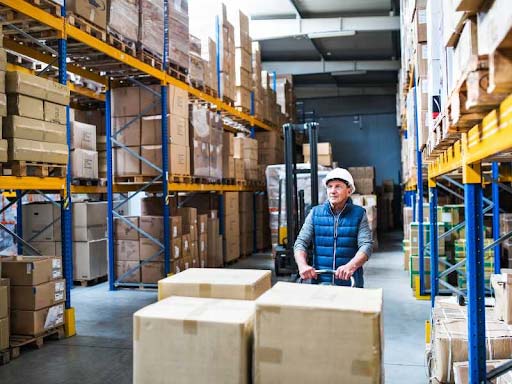
Let’s get into the title question and answer – what is eCommerce fulfillment? As with most things, there is not just one model of eCommerce fulfillment. eCommerce fulfillment is an order fulfillment process, and the various aspects of the process will depend on the client, the product or products, the type of commerce, and the fulfillment services provider.
Basically, an order is made online. Through a technology system, the seller and the fulfillment company receive the order. Inventory from the seller will have been shipped to the fulfillment center, received, and placed in the warehouse. When the order comes through the employees in the warehouse will pick the product and pack it for shipping. The final step is to ship it to the recipient.
There are three primary types of fulfillment: in-house, dropshipping, and a fulfillment provider, called 3rd party logistics company (3PL). Let’s look into each one.
In-House Order Fulfillment Process
In-house order fulfillment is when the business itself warehouses and fulfills orders for its own products. The company would have its own warehouse facilities, employees, warehouse and inventory management systems, customer service, personnel, and so forth. The company does it all, in-house.
If the business is relatively small, this is a good option. Businesses that sell on consumer-to-consumer (C2C) platforms like Etsy, for example, would likely do their own fulfillment. Some small to medium-sized businesses do in-house warehousing and order fulfillment services as well. The advantage would be that they have control over the entire process, and they can customize their packaging, hire their employees, outsource tasks, enjoy lower storage costs and costs of inventory management, and other costs as well. Also, they have full quality control and oversight.
The negatives of in-house fulfillment service might be limited storage space and no shipping discounts which a third-party fulfillment service would have. Other issues might be that it’s time-consuming, not possible to scale, and there is limited labor.
Dropshipping eCommerce Order Fulfillment Process
There is a form of eCommerce and a fulfillment process called dropshipping. This is where a business has a website and a platform that displays products and sells products, but they do not fulfill the order in-house or through a third-party logistics company (3PL). The process is as follows: the order goes to the supplier who picks and packs, and ships the product to the business customer. The eCommerce retailer does not have possession of the product at any time, so does not have to store it, pack it, ship it, and so on.
The first advantage to dropshipping is the smaller up-front investment required. The retailer can list the product and not have to purchase the product until the order comes in from the customer. That means lower inventory costs, and since the retailer doesn’t pay warehouse fees or wages, or pay for packaging, packing, and shipping that means low or no fulfillment costs. The dropshipper can offer trending or popular products so that’s another plus.
What would be the negatives? Lower profit margins are a major one and no control over the shipping and handling is another big one. Also, the eCommerce retailers doing dropshipping cannot offer bulk pricing, they have to rely on the supplier for stock, they have shorter lead times, and they have to rely on the supplier for customer service. Basically, the supplier does the fulfillment and the dropshipper is the storefront.
The 3PL: eCommerce Fulfillment Provider
We’ll take a brief look at the operation of a fulfillment service, and later on, we can look at the details involved in full-service fulfillment. For now, looking at the 3rd party fulfillment service as compared to in-house fulfillment, we are looking at services that are a major player in the supply chain.
The fulfillment service will source transportation, receive the product, and warehouse it, they’ll do warehouse management and inventory management, they’ll pick, pack, and ship, they’ll do freight forwarding, cross-docking, customs brokerage, and more. For the in-house eCommerce retail business, the 3PL will nearly do it all.
When companies outsource to a fulfillment service they free up time, resources, and labor – everything having to do with fulfilling orders. Many retailers do this as it benefits their company more to focus on marketing and business development. Another benefit is the tools of the fulfillment service, the buying power, the shipping discounts, and the industry expertise. Partnering with a fulfillment service also can benefit them concerning meeting customer expectations.
What are the advantages of eCommerce fulfillment services? A very significant advantage is the industry expertise that a fulfillment service provides. Another advantage would be multiple warehouses in different locations, which can save on shipping. The fulfillment service will have shipping, handling, and returns expertise and greater buying power. Improved data is an advantage and the ability to scale is a big advantage. The main disadvantage is that the eCommerce retailer will relinquish control over the fulfillment of their orders.
What Is the Order Fulfillment Process?

We have looked into the various forms of eCommerce, and the three main types of fulfillment. Now let’s take a look into the order fulfillment process.
There are six basic components to the process, and the first is inventory management:
- Inventory Management requires a very comprehensive technology that can confirm what is on the shelves, where those products are located, where they need to be moved to, and so on. When orders come in, the Inventory Management system will locate and direct the inventory.
- Warehousing and Storage is a component of the fulfillment process, specifically designated for each client according to how their fulfillment is done.
- Receiving is a process as well. When products are received they must be opened, counted, inspected for damage, scanned into the system, and placed in the appropriate location.
- Pick and Pack is the process of locating the product that has been ordered, moving it to the location for employees to pick it up and take care of it in the packing station, getting it ready for shipping.
- Shipping is the next process. Shipping is done according to client specifications, utilizing whichever shipment carriers are required whether it is a large B2B order or a smaller B2C order.
- Returns Management is receiving and handling returned products according to client specifications, either returning the product to inventory, repairing it, donating it, recycling it, or disposing of it.
Detailed View of eCommerce Fulfillment Services
We have looked into eCommerce and fulfillment centers with somewhat of an overview. Now we would like to get into the details, including the tasks having to do with customer service and business process services.
We’ll look into systems and technology, warehouse management, inventory management, back-office support, returns management, pick and pack, subscription box fulfillment, value add, kitting, Ratelogic and shipping services, receiving, and sustainability.
Inbound – Receiving of Inventory
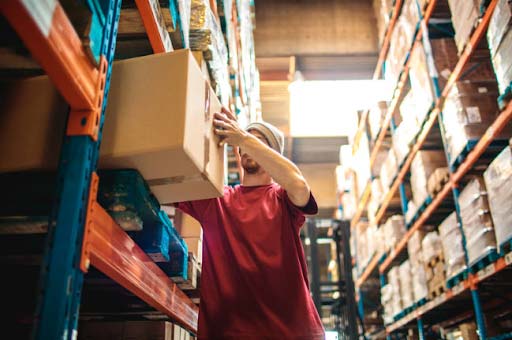
The first step in the order fulfillment process is to get the products delivered to the eCommerce fulfillment provider. The business will let the fulfillment provider know exactly what is being shipped, and the shipment will be arranged through appropriate carriers. The fulfillment provider will receive the products by validating the item counts, inspecting the products for damages, inspecting factory-sealed inventory, determining there are no shortages, scanning the products into the warehouse management system and inventory management system, creating detailed discrepancy reports, and in some cases labeling the products.
Warehouse space comes at a cost, so for the sake of the business and the fulfillment service provider, inventory accuracy is critical. Depending on whether the business is a B2B or B2C, the location of the product in the warehouse will be determined. The warehouse management system will indicate the location and the amount and the products will be ready for putaway. In a warehouse, the putaway system simplifies the process of storing items and reduces the risk of misplacing or losing items.
Here are the details:
- Task #1 is for the business to do its own pre-receiving tasks and create the proper documentation. The business decides on how much, how many containers, what packaging will be used, and the things they will require of the fulfillment provider. The fulfillment provider will have pre-receiving requirements as well, and often steps to take. The business will likely fill out a warehouse receiving order with a barcode visible for the fulfillment provider to scan. This of course informs the warehouse management system when the packages arrive.
- Task #2 is unloading the stock into the warehouse. The fulfillment provider’s staff will meet the truck at the loading dock and confer with the driver. Unloading may require forklifts and pallet jacks. Of course, it benefits the process if the truck beds are packed in the reverse order of the delivery schedule, enabling the workers to not have to move the cargo around.
- Task #3 is to unpack, count, examine, record – do a detailed inventory of what has been received. We have already discussed the importance of this phase of the task of receiving. Both the business and the fulfillment provider will need accurate records of the inventory. The information about the inventory will go into the fulfillment center’s inventory management system and be available for both the business and the fulfillment center. It’s worth mentioning that the fulfillment center’s technology must be top-notch. With the number of clients and vast inventory, the fulfillment center must have an in-house IT team.
- Task #4 is to store and file the inventory in the predetermined location, most efficient for moving to pick and pack when orders come in or shipping in larger amounts to business consumers. Receiving sounds simple, but it is not. It is the foundation for the efficiency of filling orders and keeping track of inventory.
Fulfillment Center Systems and Technology
The fulfillment provider must accomplish a great deal with its IT programmers as fulfillment is complex, to say the least. Let’s begin with data integrations. This means integrating the technology of the business with the technology of the fulfillment center.
Within this integrated system the amount of inventory is apparent to both, the orders are apparent to both, where the orders are in process is apparent, and shipping is apparent. Real-time access to this data is available to the business in the client portal provided by the fulfillment service. And – the top-level fulfillment provider will provide reporting and analytics for the business as would a business partner.
Fulfillment Center Warehouse Management
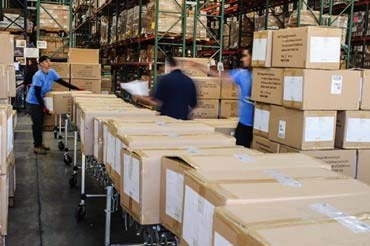
The Warehouse Management System (WMS) will be created by the in-house technology team of the fulfillment provider. There are proprietary Tier-1 systems, but for more flexibility and ease of set-up for the clients a proprietary internal system is preferred. The WMS platform will be a cloud environment, integrating the warehouse data with the client system, providing real-time data for the placement and movement of inventory in the warehouse, available to the client through a dashboard.
What can be accomplished with a proprietary WMS system? First of all, it’s mobile-friendly – data can be scanned in. The system makes it possible for clients to see inventory and shipments, allowing for the selection of the best shipping times and options. The system makes warehouse management cost-efficient due to fewer manual tasks, and it allows for less rework, recounting, repackaging, and so forth. Stock listings are always updated, and accurate real-time inventory counts are available.
An in-house developed warehouse management software will be flexible enough to handle pick and pack for both B2B and B2C clients. Warehouse operations will include inventory management, receiving, and returns. An in-house team can code modifications when needed.
A good WMS will provide inventory accuracy, reduced labor costs, reduced picking and shipping errors, flexible and responsive operations, transparency, better customer service, and much more. The technology team working in-house will focus on data security, integrity, and data protection.
Fulfillment Center Inventory Management
Fulfillment clients need to have real-time information on their inventory status availability, and that information must be accurate. Fulfillment centers control many thousands of SKUs for many different clients and industries. There are very strict procedures for receiving, putting away, picking and packing, replenishment, quality control, movement of bins, and these procedures are overseen by an inventory management team.
What is the difference between warehouse management and inventory management? They’re both Technology-based but not interchangeable. Inventory management is an umbrella term that includes all of the processes required in controlling inventory, handling returns, and forecasting demands. Warehouse management is focused on tracking and controlling products and materials as they move within the facility.
An inventory management system will keep close track of the products and materials themselves, rather than where they are. When the inventory management is top-notch, the company will be able to apply lean practices and reduce unnecessary expenditures. The fulfillment company will also be able to eliminate data corruption with the best-of-breed operating systems.
Back-office Support for Fulfillment Services
Back-office support also referred to as business process outsourcing, comes into play when the client of the fulfillment service wishes to focus on product development, marketing, sales, and so forth, and they outsource business processes and administrative tasks to the fulfillment provider. The fulfillment provider that offers business process outsourcing will be a full-service provider.
Back-office tasks could include order entry, building customer profiles, order routing, EDI management, accounting services, customer service, and financial reporting – many if not all of the tasks that a retailer can outsource, a full-service fulfillment center will provide. Providing these services involves working closely as a partner with the fulfillment service.
There are additional services as well, such as eCommerce development, sales rep support and payment of commissions, and payment processing. Many eCommerce retailers will take advantage of back-office service and collaborate closely with the fulfillment provider while they focus on product development, branding, marketing, and sales.
Returns Management aka Reverse Logistics

Full-service fulfillment services will provide both customer service and management of returns. The team doing the management of returns will closely follow procedures established by the client. The process will involve receiving the returned product, determining whether it can be returned to inventory, whether it needs repair, if irreparable whether it can be recycled or donated, and whether it must be disposed of. An environmentally conscious fulfillment company will focus on recycling rather than disposal. The customer service team will provide the credit to the customer, or an exchange for the customer.
The full-service fulfillment provider will provide consumer returns, large volume retail returns, and they will provide returns refurbishment. Concerning consumer returns, for D2C clients, the returns will be integrated with the business software so that the data is available immediately. Returns that can be re-sold are returned into inventory. Retail returns from big-box retailers, on the other hand, are received and processed, itemized, and data is sent to the client. Refurbishment will be done on returns as specified by the fulfillment client.
Finally, the reason returns are also known as reverse logistics is that the original movement of the supply chain is reversed. The ideal in reverse logistics is to inspect the returned product and find it, or make it worthy to go back into inventory and be sold once again. The ecology is kept in mind as there is the intention of keeping the product from becoming waste in a landfill either by returning it to inventory, selling it through another process, donating it, or recycling the product.
The Picking and Packing Fulfillment Process
There are several types of picking, organized for efficiency and reducing worker fatigue. The different types are piece picking, batch picking, zone picking, and wave picking, and there are different strategies behind each.
Piece picking is when workers pick orders one at a time. It would be employed in the case of an ASAP order. Batch picking makes sense when there is a high-volume product. It saves time and reduces worker fatigue. Zone picking is a strategy where workers have their zones. This is good for efficiency, increased speed, and knowledge. The last one, wave picking, is a common strategy of combining batch and zone picking. A strong advantage is that it reduces worker fatigue.
Next comes the packing, and interestingly, packing is important to customer satisfaction. The packing station should be designed for the products being packed, so if some special kind of packing is required, the right materials are there. Some fulfillment clients want environmentally friendly packaging to be used, and a quality fulfillment company will be using biodegradable packing materials. There are also fulfillment clients that want to use their branded packing materials and the fulfillment service accommodates that.
Some fulfillment services use automation to make the pick-and-pack process more efficient. The automation would be Put Walls and automated bagging and labeling. A Put Wall is a means of shelving that relies on scanners. These automated systems can be utilized together, greatly increasing efficiency.
Subscription Box Fulfillment Service
Most of us are familiar with subscription boxes, which usually consist of a mix of products that are shipped to a customer monthly or quarterly. Either the single subscriber receives the same items in each shipment, or the order is customized. Subscription boxes are fulfilled by fulfillment services utilizing an established process. Important to the process is having the stock at subscription time, including all of the right items (kitting), and it must be shipped accurately, to arrive at the designated time.
The team handling subscriptions must be knowledgeable and skilled at kitting, picking, and packing all required items, and creating a pleasant experience of unboxing. Branding will be part of the order. A challenge to the fulfillment of subscription boxes is the need for the order to arrive at the same time each month. The correct processing of these orders depends on a very good technology system and integration with the system of the eCommerce retailer.
Value-Added Fulfillment Services
Kitting, complex assembly, packaging, and returns management are all considered Value Add Services (VAS) or Value-Added. Value Add would simply mean that the goods in the inventory need some extra work before they are ready to ship. Labeling for international sales would be one of these services. The label may need another language or information about content, so this labeling is a VAS. If the product is a garment, it might need a hang tag or be put on a hangar, so that’s a VAS.
And it goes on with several other possibilities. The product might need a UPC/barcode sticker or shrink wrapping or sealing. Fulfillment clients may need the package kitted – which means pulling several different items and putting them in one box for shipment. There is also the possibility of quality inspection and repair work, which on occasion may be required for returns. Another VAS could be the subassembly of a product and the final assembly. There may be a need for gift wrapping a product and repacking, and finally returns management, which we covered previously. VAS includes all of these and more.
The Fulfillment Service of Kitting
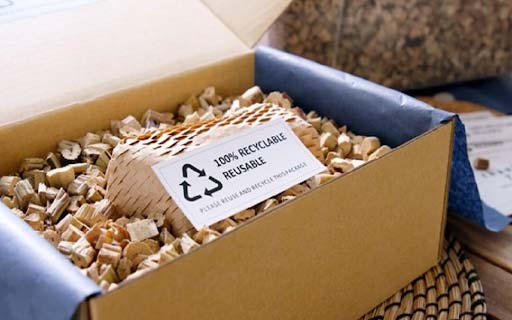
We mentioned Kitting in our writing about subscription box fulfillment and also in the value-added fulfillment service. But kitting needs a little more investigation, as it is its own order fulfillment process. When a package is a kit, it includes a bundle of items in one shipment. Basically, what makes it a fulfillment process is that a group of items will be combined into one SKU and shipped as a unit. Retailers offer these combinations to increase sales and simplify the shopping experience to meet customer expectations.
There are two different types of kits. One is when the retailer pre-packages the items as a kit and warehouses it under one SKU, and the other is when the fulfillment service in response to the order slip picks the different products and puts them in a kit under one SKU. So, #1 the retailer sells a pre-packaged kit, or #2 the combining is done by the fulfillment center. We have already spoken about subscription boxes, which are one form of a kit operating according to its own process.
When the fulfillment service creates the kit, they will pull the different components from stock according to the order and assemble them, and package them under one SKU. When the products are packaged together and sold as a set, they will typically be moved to a new location in the warehouse for ease of access by the workers picking and packing the order. This speeds up the process and is a space-saving consolidation as well. This type of kitting benefits the customer, as kits are often offered as a sale, and it benefits the retailer by increasing sales of some items that may not be moving or selling well.
Ratelogic and the Shipping Fulfillment Process
Ratelogic deserves mention as it is a shipping rate comparison software used by some fulfillment companies to find the lowest cost shipping rates for the fastest acceptable shipping times for the clients of the fulfillment provider. If the fulfillment service uses Ratelogic to analyze the dimensional weight and the destination it can select the best carrier, saving the client money and meeting customer expectations concerning the speed of the delivery.
Shipping is all about price, speed, and service. One of the major reasons that online retailers turn to third-party fulfillment services (3PLs) is for the cost savings and efficiency of their shipping services. The fulfillment service can negotiate with carriers and get the best rates. The fulfillment service will also audit the shipping transactions, making sure their clients are not charged any invalid fees and pay only for shipments that arrive within the guaranteed time frame.
The fulfillment provider will have expertise in several areas, including international shipping and hazardous goods shipping. They will also have experience with less-than-truckload (LTL) and truckload (TL) freight services. The knowledge and understanding of the shipping process, and the ability of the fulfillment service to not only find the best rates based on time-frame but to audit every transaction as well – these things are valid reasons for outsourcing rather than doing in-house fulfillment.
Sustainable eCommerce Fulfillment Services
We promised to begin with receiving and conclude with sustainability. In today’s world, eCommerce retailers are as concerned with sustainability as are their customers. Not every eCommerce fulfillment service provider will be focused on sustainability in their operations, but some are. All things being equal, the eCommerce business will choose sustainable fulfillment, knowing that it is time to recognize the importance of sustainability.
The sustainable fulfillment service will have accomplished some changes in packaging, recycling, and warehouse lighting and equipment. First of all the fulfillment service will use biodegradable packaging and filler. Attention should be given to the size of the box, of course, avoiding the overuse of filler. Some fulfillment clients provide their own branded packaging, and these retailers are encouraged to use biodegradable packaging and filler.
Also, attention will be given to recycling. When the products are shipped to the warehouse they will be wrapped and packaged, and this packaging will be removed. The fulfillment service will need to collect and bundle the plastics and other materials for recycling. Energy use in the warehouse can and should be diminished through LED bulbs, motion detectors, skylights, and so forth. And finally, battery-operated equipment can and should be used.
Now let’s talk about transportation. How can the choices of an eCommerce fulfillment service affect sustainability in transportation? One thing the fulfillment service can do is optimize the route and manage the transportation with the environment in mind. Don’t do split deliveries, optimize the route, use the optimum scheduling, and manage the transportation in an environmentally conscious manner. At this time, until changes are made in the transportation sector, these steps will help.
Understanding eCommerce Fulfillment
We hope this article has answered the “what is” question. We reviewed the different types of eCommerce, gave an overview of eCommerce fulfillment services, and then went into detail about the fulfillment process, outlining in-house, dropshipping, and outsourcing to a 3PL.
We covered the third-party outsourcing process in detail, from receiving to putting away to technology and warehouse management. Then we covered inventory management, picking and packing, value-added services, kitting, and back-office support including customer service, returns management, and shipping. And finally, we covered sustainable eCommerce fulfillment services.
The fulfillment services of a full-service company are extensive. Not all fulfillment services provide all of these services, so questions need to be asked and the eCommerce fulfillment provider needs to be apprised of all of the services needed. The questions are covered and answered in the discussions before the onboarding process and during the onboarding. Is the fulfillment provider the correct one for your business? The bottom line is there has to be interviews, meetings, and conversations, as when outsourcing to a fulfillment provider there must be a mutually advantageous partnership.
Fulfillment Services of a B Corporation
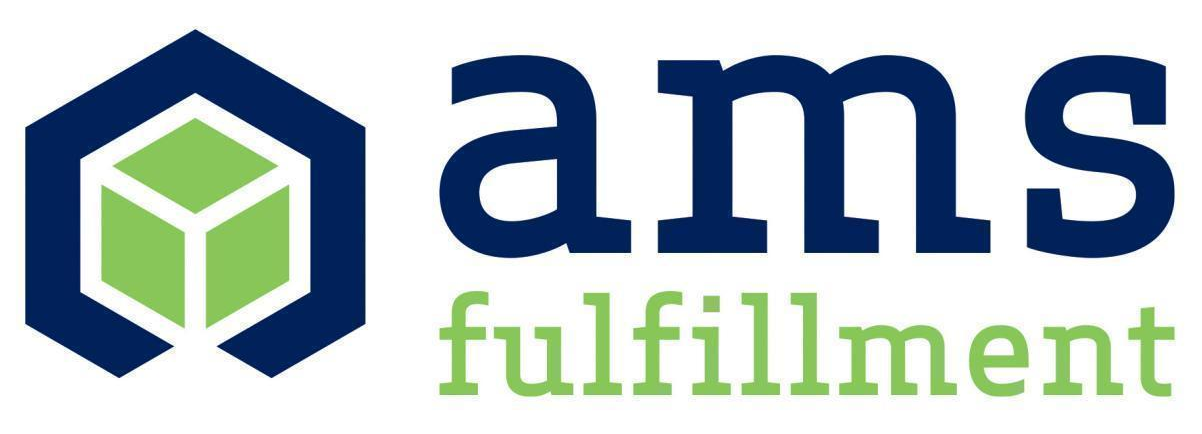
There are very few fulfillment companies that have made the commitments of a B Corporation – commitments to employees, community, environment, and clients to consider all four as stakeholders in their decisions. B Corporations do not put profit above all.
AMS Fulfillment is a mid-sized fulfillment company, headquartered in the Los Angeles area, near the ports, with branches on the East Coast, in Delaware and Pennsylvania. AMS provides all of the full services mentioned in this article and in addition, AMS has a strong focus on:
- Employee safety
- Free college-level education on campus.
- Great benefits
- Volunteer activities in the local communities include:
- Clean-up
- Hiring individuals with disabilities.
- Justice system involvement
- Use of biodegradable packaging.
- Extensive recycling including sheet plastics.
- Partnership with clients in all areas.
That is a B Corporation. Be the change you wish to see in the world.
What are B Corporations? They are for-profit companies dedicated to using business as a force for good. B Corporations are legally required to include stakeholders when considering the impact of their decisions. What or who are the stakeholders? Their employees, the communities in which they exist, the environment, and their clients.
AMS enjoys a diverse workforce and we value them, protect them, and encourage their advancement. AMS is a positive force in the communities that surround us. AMS thinks Green in our warehouses and our use of materials. AMS is dedicated to being a partner with our clients, assisting them, and looking out always for their best interests.
We invite you to connect with AMS Fulfillment as a potential partner in the fulfillment of your eCommerce orders.
GET IN TOUCH
Ready to learn more about ecommerce fulfillment? Don’t hesitate to reach out!
LET’S CONNECT




